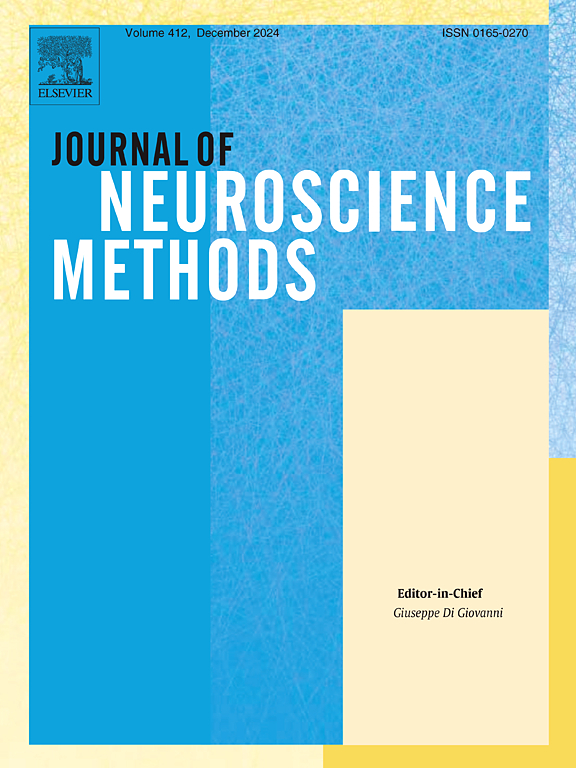Deep clustering of polysomnography data to characterize sleep structure in healthy sleep and non-rapid eye movement parasomnias
IF 2.7
4区 医学
Q2 BIOCHEMICAL RESEARCH METHODS
引用次数: 0
Abstract
Background:
The clinical standard to interpret polysomnography (PSG) data is to categorize sleep in five stages, which omits information. SOM-CPC is an unsupervised method that extracts features through contrastive predictive coding (CPC), and visualizes them in two dimensions using a self-organizing map (SOM). We propose various visualizations and analyses for pattern recognition in PSG data through SOM-CPC.
New method:
We used SOM-CPC to learn a representation of 30-s multi-channel epochs from two datasets of healthy sleepers ( and in the test sets). SOM-CPC was, additionally, used to further characterize awakenings from slow wave sleep (SWS) in non-rapid eye movement (NREM) parasomnias. For the latter, SOM-CPC was trained on 5-s single-channel EEG windows of non-rapid eye movement parasomnias and matched healthy controls (test set: ).
Results:
SOM-CPC organized epochs of healthy sleepers such that it separated sleep stages, and also encoded age of the subjects and time in the night. Parasomnia episodes, compared to non-behavioral SWS awakenings, exhibited higher SWS-specificity prior to transition to wakefulness, higher Wake-specificity post-transition, and longer durations.
Comparison with existing methods:
The learned representations were compared against gold-standard sleep stage labels and variables known to impact sleep structure.
Conclusions:
SOM-CPC seems a useful model for pattern discovery in PSG data, as it enables observation of state changes that are more intricate than full sleep stage transitions. It, moreover, provided further evidence for signal level differences in the EEG between SWS awakenings with and without parasomnia episodes.
多导睡眠图数据的深度聚类以表征健康睡眠和非快速眼动异睡眠的睡眠结构。
背景:临床解释多导睡眠图(PSG)数据的标准是将睡眠分为五个阶段,这遗漏了信息。SOM-CPC是一种通过对比预测编码(CPC)提取特征,并使用自组织映射(SOM)在二维上可视化的无监督方法。我们提出了通过SOM-CPC对PSG数据进行模式识别的各种可视化和分析。新方法:我们使用SOM-CPC从两个健康睡眠者数据集(测试集中n=52和n=22)中学习30秒多通道时代的表示。此外,SOM-CPC被用于进一步表征非快速眼动(NREM)异睡眠中慢波睡眠(SWS)的觉醒。对于后者,SOM-CPC在非快速眼动异动和匹配健康对照的5 s单通道EEG窗口上进行训练(测试集:n=67)。结果:SOM-CPC对健康睡眠者的睡眠时间进行了组织,划分了睡眠阶段,并编码了受试者的年龄和夜间时间。与非行为性慢波睡眠(SWS)觉醒相比,睡眠异常发作在过渡到清醒之前表现出更高的SWS特异性,过渡后表现出更高的觉醒特异性,持续时间更长。与现有方法的比较:将学习到的表征与金标准睡眠阶段标签和已知影响睡眠结构的变量进行比较。结论:SOM-CPC似乎是在PSG数据中发现模式的有用模型,因为它可以观察到比完全睡眠阶段转变更复杂的状态变化。此外,该研究还为伴有和不伴有睡眠异常发作的SWS觉醒的脑电图信号水平差异提供了进一步的证据。
本文章由计算机程序翻译,如有差异,请以英文原文为准。
求助全文
约1分钟内获得全文
求助全文
来源期刊

Journal of Neuroscience Methods
医学-神经科学
CiteScore
7.10
自引率
3.30%
发文量
226
审稿时长
52 days
期刊介绍:
The Journal of Neuroscience Methods publishes papers that describe new methods that are specifically for neuroscience research conducted in invertebrates, vertebrates or in man. Major methodological improvements or important refinements of established neuroscience methods are also considered for publication. The Journal''s Scope includes all aspects of contemporary neuroscience research, including anatomical, behavioural, biochemical, cellular, computational, molecular, invasive and non-invasive imaging, optogenetic, and physiological research investigations.
 求助内容:
求助内容: 应助结果提醒方式:
应助结果提醒方式:


